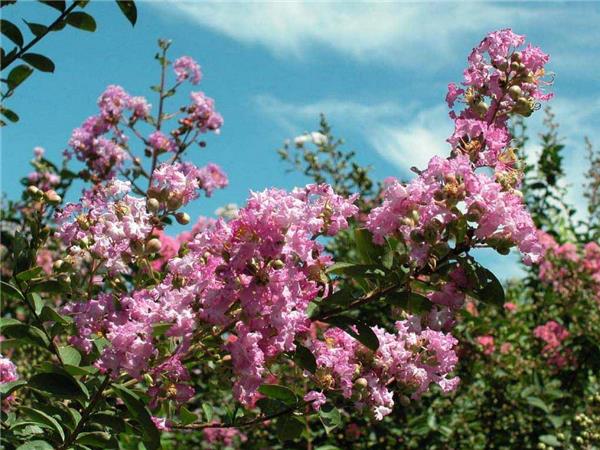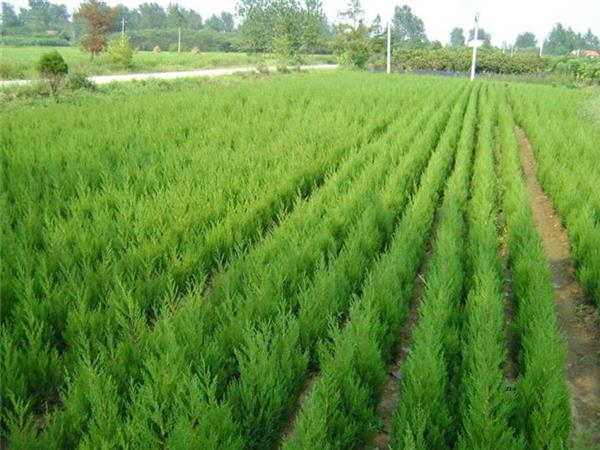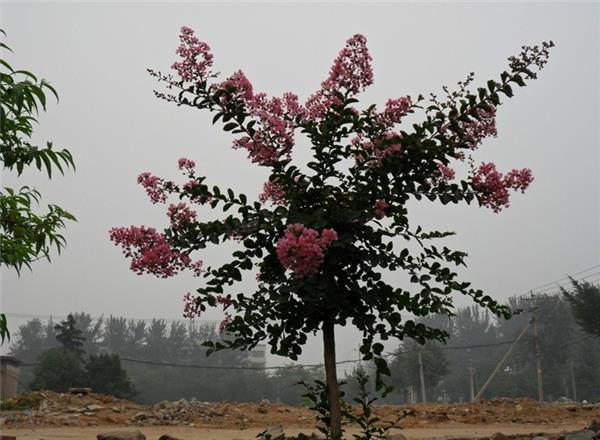Planting and maintenance of seedlings and introduction of professional terms of seedlings
The relevant knowledge of greening seedlings is very various and complete, from their characteristics, habits, planting methods, and even some necessary professional terms, are the knowledge we need to understand and learn.

Planting techniques of Greening seedlings
Planting season: different tree species can be divided into spring planting, plum rainy season planting, autumn planting and winter planting. Generally deciduous trees are planted in spring half a month before sprouting or autumn from October to December. Flowers and trees that sprout early should be planted in autumn, while flowers and trees that bloom in early spring should be planted after flowering in order not to affect flowering. For the tree species that sprout late in spring, such as Sapium sebiferum, they can be planted in late spring. If they are planted prematurely because they are still dormant, shoot withering is easy to occur after planting. Some evergreen broad-leaved trees such as sweet-scented osmanthus should be planted when they start to grow leaves in late spring.
Pseudo-planting of seedlings: all seedlings can not be planted on time within a few days after transportation, or those seedlings that are left after planting should be classified and planted. There are two kinds of false planting: soil ball and bare root. The seedling pseudo-planting with soil ball first shrinks the seedling crown so that the soil ball touches the soil ball, each crown of the tree crown covers a layer of soil on the soil ball, fills the gaps of the soil ball, and then evenly sprinkles water on the crown and the soil ball to keep it moist. Pseudo-planting of bare-root seedlings can be done by digging trenches and oblique planting, covering the roots with soil, tamping layer by layer, and often spraying water on the branches and leaves of the tree species to keep moist. If there is a day when the sun is particularly strong, shading nets should be set up on the seedlings to reduce the light intensity.

Key points of seedling maintenance in summer
1. Generally speaking, there are more Rain Water in summer, so drainage and waterlogging prevention should be carried out in time. The reason why plants produce waterlogging is due to the lack of oxygen in the soil, resulting in high carbon dioxide concentration, which hinders the water absorption of plants, which will poison the roots and cause waterlogging over a long time.
2. Irrigation should be carried out in time, and irrigation in summer should be carried out more and less. Make sure that each irrigation is thoroughly and evenly irrigated, and beware of pouring half of the water. In the later stage of seedling growth, irrigation is generally not needed except in a particularly dry climate.
3. Small seedlings and nutrition cup seedlings take root quickly and grow stably, so they can start to apply fertilizer in the summer of the same year, while big seedlings and big trees generally do not apply fertilizer in the summer of the same year. Nursery seedlings should be mainly fertilized with water and fertilizer, and seedlings planted in mountainous areas can be surrounded by urea 10g/ plants from 10cm after rain.
4. In order to ensure normal photosynthesis of seedlings, sunshade umbrellas with high shading rate can not be selected to allow trees to receive a certain amount of scattered light. Generally, sunshade nets with shading rates of 40% to 60% can be selected.
5. Ploughing and loosening the soil should be deepened one by one, and be sure not to hurt or press the seedlings. According to the experiment, at noon on a sunny day, the surface temperature after loosening the soil is about 8 ℃ higher. Therefore, it is not suitable to loosen the soil and weed at noon on a sunny day with high temperature and drought. It is best to do it in the morning or evening on a cloudy day or after rain.

Introduction of common terms for greening seedlings
1. Plant height: the vertical height from the ground surface to the normal growth tip of the plant.
2. The height under the branch (the height of the branch point): refers to the vertical height of the tree from the ground surface to the lowest branch point of the crown.
3. Bare dry height: refers to the bare dry height of palm plants from the ground surface to below the lowest leaf sheath.
4. Shrub height: the vertical height from the ground surface to the normal growth top of the shrub.
5. DBH: the diameter of the tree trunk 1.3 meters from the ground surface.
6. Crown diameter: the average value of the maximum and minimum diameter of the tree crown projection.
7. Canopy diameter: the average value of the maximum and minimum diameter of shrub crown projection.
8. Base diameter: also known as ground diameter, refers to the base diameter of 0.1 meters away from the ground surface of the seedling trunk.
9, the length of the main vine: also known as the length of the stem, which refers to the length of the main stem of the climbing plant from the root to the tip.
10. Soil ball diameter: also known as ball diameter, refers to the diameter of the mud ball carried by the root when the seedlings are transplanted.
11. The thickness of the mud ball: also known as the height of the mud ball, which is the height from the ground to the surface of the mud ball carried by the seedlings when transplanting.

In fact, it is important to know some professional terms, so that we can more intuitively visualize the green seedling information provided by suppliers, and it is more convenient for us to choose the tree species of the specifications we want to plant.
Related
- Wuhan Hospital Iron Tree Blooming Result Was Instantly Frightened by the Gardener Master
- Which variety of camellia is the most fragrant and best? Which one do you like best?
- What is the small blue coat, the breeding methods and matters needing attention of the succulent plant
- Dormancy time and maintenance management of succulent plants during dormancy
- Minas succulent how to raise, Minas succulent plant pictures
- What are the varieties of winter succulent plants
- How to raise succulent plants in twelve rolls? let's take a look at some experience of breeding twelve rolls.
- Attention should be paid to water control for succulent plants during dormant period (winter and summer)
- Watering experience of twelve rolls of succulent plants
- Techniques for fertilizing succulent plants. An article will let you know how to fertilize succulent plants.



